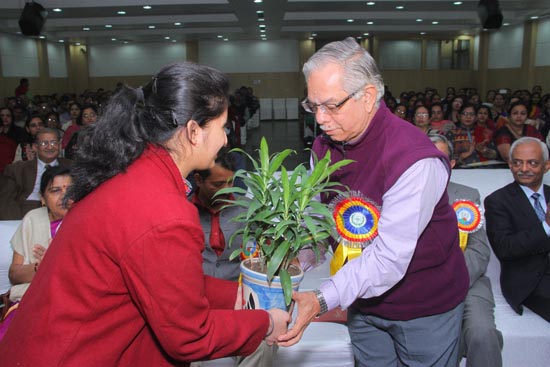
Contribution of Dewfall to the Water Requirement of Winter Wheat
K.K.Nathan
Principal Scientist ( Retd.), Water Technology Centre, IARI, NEW DELHI
Dew is a form of direct condensation of water vapour from the atmosphere and the condensation occurs on the surfaces cooled by back radiation of the earth during the night time. It is considered to be a secondary source of precipitation /moisture for the winter crops like wheat mustard etc. particularly in the northern region of India under semi dry or dry zones. It is a potential source of water for the stressed crops and also regulates the plant cells. Heavy dew fall suppose to reduce the transpiration rate in plant system and helps to regain the plant turgidity after day time stress. The colour and structure of the soil as well as its hygroscopicity does influence the dew catch. It is found that greater the outgoing radiation or back radiation by the earth , the better the dew deposition. In general about 570 Cals. of heat are released from one gram of dew deposit. The optimum meteorological conditions for dew formation are wind speed of 1 to 3 m/sec, clear skies during night and intense outgoing radiation of the earth’s surface.
The contribution of dew as a source of water for the crop water requirement during winter can be considerable depending on the climatic conditions as well as the type of vegetational crops. Dew fall as intercepted water contributes significantly to the water lost as evapotranspiration in many forest type of vegetations and field crops. This is of special importance to the wheat-crop growth which coincides with dew season, particularly October to March in northern regions of India.
Frequency of Dew fall.
Frequency of dew found to be maximum during the months October to march when more than 80% of dew occurs over the plains of north and north west India. Dew fall is about 20% to 40% of the seasonal amount occur the plains of Bihar, Eastern U.P. and Orissa. These places record a mean dewfall of 20 mm during the season. Average dew deposition compares well with countries like South Africa, West Indies, Jamaica etc. Studying the vertical profile of dew deposition, it is found to be maximum at 100 cm height from the ground. At 50 cm height the dew is 50% less than the 100 cm height dew fall. At 25cm height dew deposit is 10% less than 100 cm height and finally at 10 cm level. its deposition is 25% less of 100 cm level deposit. Dew can be maintained by dew gauge at 10cm, 25cm, 50cm and 100 cm height. Dew intensity can be recorded by dew duration recorder, which gives information both amount as well as duration of dew.
Dew Contribution To Wheat (Winter Crop)
It is a well known fact that dew fall minimizes the evaporation and transpiration of wheat crop. In other words, the crop water need of wheat crop is minimal during the dew period. It is estimated that dewfall during December to March is about 150 mm to 300 mm during the crop growth cycle when there is peak demand for water and decline in the dew deposits. Maximum dew nights prevailed during December and January 2 months when the daily deposits range 3 to 4 mm per night. Results elsewhere shows that dew deposit amount on the winter crops like wheat, is significantly more than actually recorded by the dew gauge in nearby weather station. It is estimated that dew amount deposited on various winter crops may be 8 to 9 times higher than the amount recorded in a nearby weather observatory.
In semi-arid climate like Delhi, peak crop water requirement for wheat is during February and March months which is generally the flowering phase. But dew fall contributes about 40% of the demand of water by the crop. The period of probable water stress is maximum during march and April months when both dew nights and dew amount decreases. Some moisture also give to winter wheat some winter rains in December and January months in the form of Western Disturbances. Dew contributes a minimum of 1% and a maximum of 12% of the seasonal rain around Delhi region during wheat season. Total dew nights in the month of March are maximum for Firozpur (176) and Hisar(164) as compared to other locations.
The crop water needs for wheat found to be maximum during the months of February and March. But the initial copious dew fall during January month has met the major water demand of wheat crop along with the winter rainfall. In some of the years when the dew deposits and rainfall are good, some wheat varieties like HD 2009 gave GOOD YIELD. It was also seen that Sonalika Wheat have mean crop water requirement 3 mm/day as compared to HD 2285 Wheat variety with mean water requirement of 2mm/day.
Although dewfall is considered to be a boon for the stressed plants in the season but it also a bane as it leads to many plant diseases. Good dew deposit on the host plants encourages the bacterial development in the dew water films. Heavy dew encourages Mildew Diseases, Rust, Blight and Apple Scab .But with good deposits, winter rains and fog, some irrigations can be saved, studies are also being made with Dew Catch as well as harvesting of fog on various leaf area of crops, its absorption, plant transpiration, water requirement and finally yield of the winter crops.